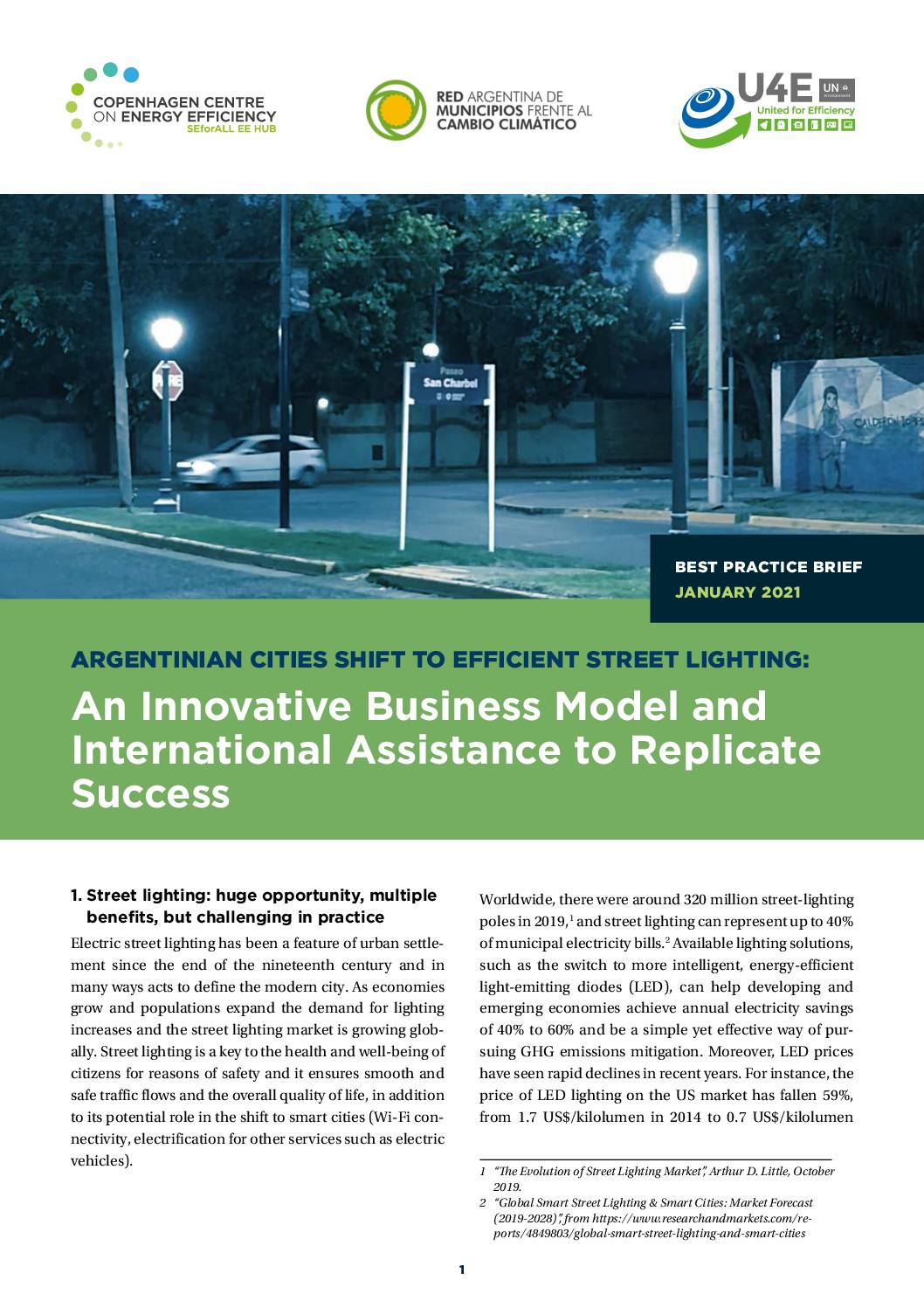Despite the multiple benefits of modern high-performance LED street lighting, as of today average LED penetration globally is still below 15 per cent. The street light ing market is driven by several factors, among which are regulatory policies, LED prices and the culture and morphology of each area, meaning that countries and municipalities differ greatly in LED penetration and business models. For instance, South America has an average rate below 5 per cent compared to Japan or Canada, where rates are around 4550 per cent. Differences in LED penetration also exist within the same country: some big cities have already reached a 100 per cent switch to LEDs, while smaller ones are still struggling, mainly due to financial, know-how and capacity barriers.
The above observations also apply to Argentina in South America. In 2019 the capital, the Autonomous City of Buenos Aires, completed the transformation of street lighting to LED. Meanwhile, the majority of smaller cities across the country still mainly rely on old and expensive lighting technologies, such as mercury vapor, high-pressure sodium, compact fluorescent lighting (CFL) or metal halide, as their primary lighting sources.
Download sourceShare this

Sectors: Cities, Lighting
Country / Region: Argentina
Tags: cities, compact fluorescent lights, light emitting diodes, lighting, low emission development strategiesIn 2 user collections: Urban Climate Neutrality (Argentina) , C2E2 Publications
Knowledge Object: Publication / Report
Published by: Copenhagen Centre on Energy Efficiency
Publishing year: 2021
